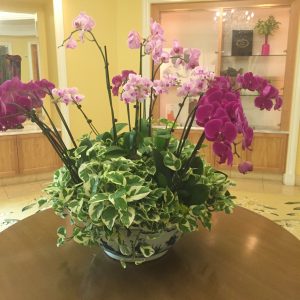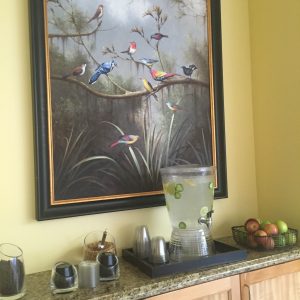Ashtanga Yoga: The 8-Limbed Path
Ashtanga Yoga is known as the “Eight-limbed Path” for the eight stages of yoga practice that a yogi passes through to attain awakening. These stages were first written about in the Yoga Sutras of Patanjali. The first five limbs are external practices, and the last three are internal practices.
-1. The first limb is Yama which is Sanskrit for restraints, or moral discipline. The yamas are broken down into five elements of spiritual practice that we can utilize:
-Aparigraha is not acquiring. Basically this means to avoid being greedy, to simplify, to not accumulate or use more than you need.
-Asteya is not stealing. Respect other people and their boundaries and property. Do not take something that is not yours, whether it is in a material, physical, spiritual, intellectual or emotional sense.
-Ahimsa is nonviolence. Practice peace in thought, word and deed, towards yourself and others.
-Brahmacharya is moderation. It also means we must be virtuous, to be loving and have compassion for others.
-Satya is truthfulness. Be honest, have integrity, understand the power of the spoken word.
-2. Niyama is the second limb in Ashtanga Yoga. It means observances, and self-restraint. There are five inner practices we can follow to maintain moral principles:
-Samtosa is contentment. Be happy in the present moment. Know that everything you have, and everything you are is enough. Be satisfied and content.
-Tapas is a zest for life. Learn and grow every day, build strength and wisdom. Develop spiritual practices and be disciplined.
-Saucha is a purity of body and mind. Take care of yourself, body, mind and spirit, and also take care of your environment.
-Svadhyaya is self-referral. Practice contemplation and introspection. Get to know yourself so that you may then know others.
-Ishvara Pranidhana is devotion. Let go of the ego and embrace a higher source. Approach life with a sense of gratitude.
-3. The third limb of Ashtanga Yoga is Asana, or yoga postures. This is the physical form of yoga that we are used to seeing. It helps us to attain stillness in both mind and body. The poses create strength and flexibility.
The word “Yoga” is derived from the Sanskrit root verb yuj. which means “to join” or “to unite.” It signifies the joining of the individual with the universal reality. It also means the union of the conscious mind with the deeper levels of the unconscious, which results in a totally integrated personality. Just as Ayurvedic practices seek perfect balance in the human body, the yogic ideal of unification is perfect balance or a state of naturalness. Every living being strives toward this ideal, which is described in the Christian religion as “the peace which passeth all understanding.” As we begin to search for balance and natural harmony in our own lives, we start to grow on a path that leads to deeper understanding and fulfillment. At such a time we learn that satisfaction comes from something that is found deep within and does not rely on external stimulation.
-4. The fourth limb is Pranayama, or breath control. With these breathing exercises we can achieve a balanced state of mind. These are many different exercises that work to invigorate the system and calm the mind.
The vital energy called chi by the Chinese and ki by the Japanese is called prana in India. Prana is seen to be everywhere and in everything; it is the basic force that animates all matter. In the study of Yoga, the life force, or prana, is closely associated with breathing practices that control and direct this important energy. Freed and able to flow throughout the body, it can stimulate both body and mind; blocked and distorted, it can sap and deplete a person’s activities.
Pranayama is really the knowledge and control of Prana. Since it is difficult for us to control the source of all the energy in the universe, we can start learning to control what is nearest to us. The body and mind is what we have to work with. It’s as if Prana is the whole ocean, and our own Prana is one wave. We can learn to control our own wave. Breathing exercises are a tool we can use to help us to become aware of our Prana. There are many different practices, but each movement of pranayama involves the inhalation, retention, and exhalation of breath. This practice is said to purify the mind, and remove distractions from the mind so that we can concentrate more easily.
-5. The fifth limb is Pratyahara, or controlling the senses. This is practicing detachment from the distractions of life.
Pratyahara is translated as a “gathering towards oneself” and it is in practice a restraint of the senses. We are so easily distracted, as our senses take our attention away from whatever it is we are supposed to be focusing on. Meditation requires stillness and concentration, so practicing pratyahara is a necessary step towards controlling the senses. The senses constantly take our attention outward, to the external world, away from the inner world. We get uncomfortable sitting in the same position, we hear a phone ring, or we smell dinner cooking and we feel that urge to get up.
Raja Yoga teaches us that although the mind is active, that is not where we get our intelligence. We get our intelligence from the soul. The mind is the instrument through which we interpret the world. The soul knows the truth. The soul carries higher knowledge. We must calm the mind so that we can access this knowledge. The analogy of a lake is often used to describe how our perception is altered. When the lake is stirred up, it becomes muddy and unclear. We can’t see through to the bottom. However, when the lake is calm, the water is crystal
These are the last three limbs are internal practices.
-6. Dharana is concentration. The idea is to fix our attention on one focal point. This helps us to gain equanimity, poise, and grace. The way to concentrate the mind is to focus it on one particular object, to the exclusion of everything else. The object could be outside the body, such as a flower, or a candle. Or the object could be inside the body, such as the heart center, or the top of the forehead. The idea is to keep the mind still by having it hold only this object, not allowing the senses to give in to distractions, and not allowing thoughts to stray from that object.
Dharana is a practice of training the mind to be still and focus. Concentration is like a muscle; we can work it and develop it. Over time it becomes stronger and more sustained. This is why a regular practice of meditation is so important. For our concentration to become, and remain, strong, we must use it.
-7. Dhyana is meditation. The purpose of meditation is to quiet the mind and open the heart. In this way we become aware of our connection with the Divine.
When the mind is able to sustain concentration over a period of time, this is called Dhyana, or meditation. In this step, the seventh in Raja Yoga, a power flows through the mind toward the object of concentration. The meditator does not sense the object itself, but merely the essence of the object. It is as if the object of meditation and the meditator become one. The effort that we dealt with in Dharana ceases, and concentration is easy and natural. In Dhyana the mind does not waver. The meditator does not even think of the process of meditating anymore. We are not aware of time or space.
The calm state of mind that we experience in meditation helps us to handle any stresses or problems that come our way during the day. Meditation helps us to maintain a peace of mind that serves us no matter what happens in the external world.
-8. Samadhi is super-consciousness. It is also called bliss, union, or enlightenment. It is when we experience the presence of the Divine with our entire self, body mind and soul.
Finally, in the highest state of meditation, Samadhi, the meditator becomes lost in the process. Samadhi means “absorption” and also “divine peace.” In Samadhi the meditator dissolves; the meditator becomes one with the whole universe. Samadhi is absolute bliss, or superconsciousness.
When Dharana, Dhyana and Samadhi are all three practiced together, this is called “Samyama.” In our house analogy, Samyama is like turning on the light – it is illuminating the Truth. All the work has been done, and now all that has to happen is that we flip a switch. And lo and behold, we can see clearly and confidently.
See Lissa featured on Mystic Mag














